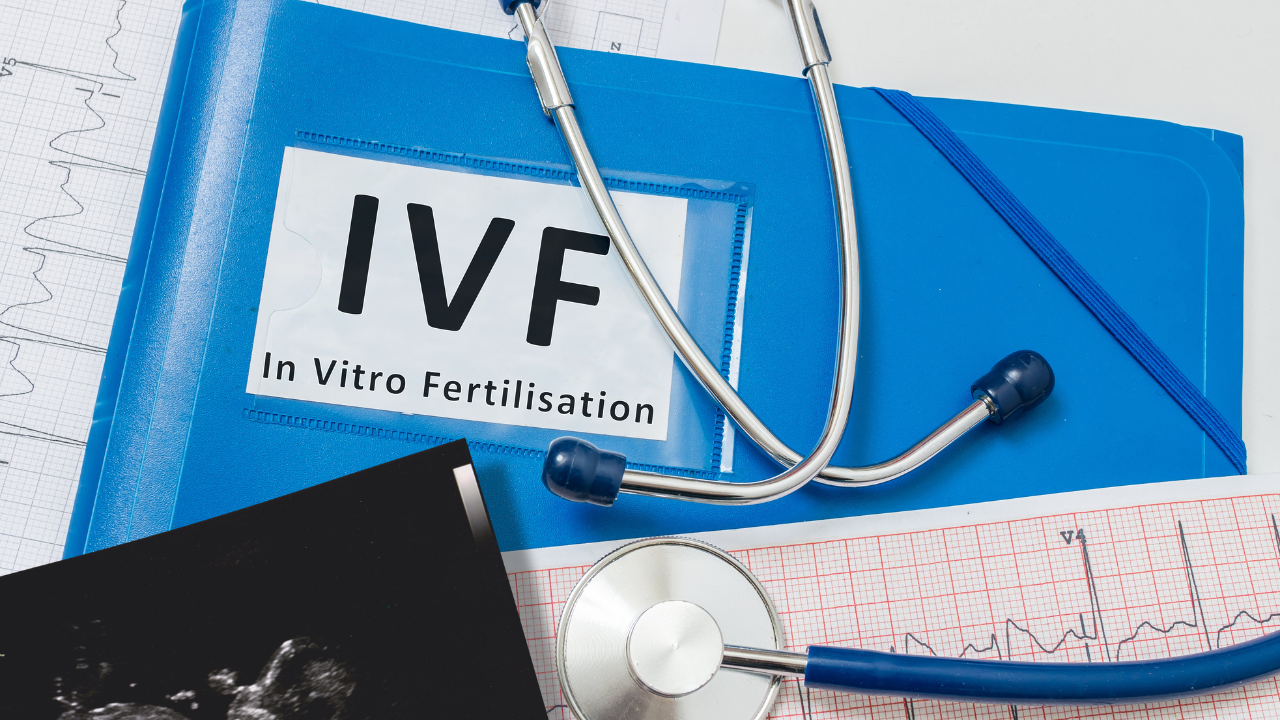
5 Things To Know Before Getting Pregnant with PKD
Oct 17, 2025Thinking about starting a family when you have polycystic kidney disease (PKD) can feel exciting—and maybe a little overwhelming. It’s important to understand that all pregnancies with chronic kidney disease (CKD), including PKD, carry a higher risk for complications. This is true even if your kidney function is normal and/or you don’t have high blood pressure.
The goal of this blog is to help you feel informed, prepared, and empowered as you plan for pregnancy. This is about awareness and preparation, so you can have a healthy pregnancy and a healthy baby with the right care and plan in place.
What should you expect when you’re expecting, and what should you be doing now to set yourself up for a smooth pregnancy? As a specialist in PKD nutrition and kidney health, I'm here to give you the information you need to plan confidently.
Keep reading, I'm going to share share 5 things you need to know, and think about, before getting pregnant with PKD, including what monitoring to expect, which medications need changing, and how to work with your medical team for the best possible outcomes.
What To Expect During Pregnancy
1. Blood Pressure and Urine Monitoring Will Be More Frequent
If you’ve been pregnant before or have experience with pregnancies in your family/friend group, you probably know that doctor’s visits become a regular part of your life. When you add PKD to the mix, expect more frequent medical visits and specialized monitoring beyond standard prenatal care. Your healthcare team will want to track two critical areas: blood pressure and urine analysis.

Blood Pressure Monitoring
Women with PKD are more likely to experience changes in blood pressure throughout pregnancy. You might assume that pregnancy can cause high blood pressure and that is partially correct.
However, it's normal to see blood pressure dip during the first and second trimesters. This may require medication adjustments to help prevent hypotension-related complications. In the last few months you may notice a jump in blood pressure as hypertension is more common in the third trimester. The key here is to stay on top of your trends and pay attention, that way if changes are needed you will know.
If you have normal blood pressure going into pregnancy, it's less likely that you will have an issue. That being said, your doctor will probably want to check your blood pressure at least once per month, and may ask you to monitor at home. Work with your doctor to create a blood pressure goal and don’t be scared if they recommend you take a blood pressure medication.
Urine Analysis
Your kidneys make urine, and urine is often an early marker for if anything has changed. Monthly urine testing during pregnancy serves two main purposes. First, it screens for urinary tract infections (UTIs), which are more frequent during pregnancy and can often be asymptomatic. Second, it monitors protein levels in your urine. An increasing in urine protein can indicate complications.
During pregnancy, your kidneys work up to 50% harder to remove waste, making both blood pressure and urine monitoring crucial for detecting any functional changes early. If your doctor doesn’t bring up urine testing early, make sure to ask them about it!
2. Close Monitoring for Preeclampsia
The second major monitoring your doctor will bring up is preeclampsia. Women with PKD face a significantly higher risk of developing preeclampsia during pregnancy. Research indicates that with PKD there is a 2-3 times greater risk of developing preeclampsia compared to the general population, with rates ranging from 10-15% in PKD pregnancies overall, and up to 40% in those who also have high blood pressure.
You’ve probably heard the term preeclampsia, but I want to go over a few key characteristics. Preeclampsia is a condition during pregnancy characterized by high blood pressure, protein in urine, fluid retention, and often includes severe headaches that don't respond to standard painkillers along with swelling in hands and feet. For women with PKD, monitoring can be complex since some symptoms may already be present prior to pregnancy. The key is to know your baseline and, along with your healthcare team, monitor for any changes from it.
Preeclampsia can lead to serious complications including poor fetal growth, early delivery, maternal seizures, and temporary worsening of existing kidney problems. In rare cases, it can cause stroke or stillbirth. Early warning signs include visual disturbances, sudden facial swelling, severe headaches, vomiting, stomach pain, and pain below the ribs.

Many women with PKD are able to go through pregnancy without developing preeclampsia. However, given the increased risk and severity of the consequences, your doctor will want to keep a close eye on any potential red flag signs and symptoms to ensure you and the baby are healthy.
What To Do Before Getting Pregnant
3. Family Planning with your Nephrologist and OB
Next, let's look at some things you are going to want to do before getting pregnant. Schedule, and plan a comprehensive consultation with both your nephrologist and obstetrician. This proactive approach allows for thorough planning and also to document and discuss your kidney health baseline.
If you haven't had an ultrasound or MRI within the past year, getting updated imaging is highly recommended. This provides a baseline view of your kidneys for comparison throughout pregnancy.
These appointments should cover your complete pregnancy and delivery plan, monitoring protocols, and detailed discussions about your risk factors. Your healthcare team needs to understand your current PKD status, kidney function, and any existing complications to create an individualized care plan.
These appointments are also a great time to discuss any prenatal vitamins that you should be taking. Some of them (notably folic acid) should be started 3 months prior to conceiving and continue for 12 weeks after conception. There may also be some medications that you are currently taking that your doctor will recommend stopping (more on this in recommendation 5).

4. Genetic Counseling and Family Planning Options
Along the same lines as pregnancy planning meetings, another form of planning to consider is family planning and genetic counseling. Meeting with a genetic counselor provides invaluable insight into PKD inheritance patterns and your family planning options. During these meetings you'll learn about the percentage chance of passing PKD to your children and understand the specific type of PKD you carry.
Another important thing to consider is in vitro fertilization (IVF). Combining IVF with Preimplantation Genetic Testing for Monogenic disorders (PGT-M) offers the opportunity to have children without PKD. This process involves testing embryos, before implantation, and only transferring those unaffected by PKD, potentially ending PKD in your family line. Research shows that specialized IVF with genetic testing can be highly effective for PKD families.
Cost is definitely important to consider, since IVF and genetic counseling can be expensive, and might not be covered by insurance. I highly recommend looking into assistance from the PKD Free Alliance, an organization whose goal is to end PKD in the next generation. They offer funding assistance for genetic testing and IVF procedures, making it an option for more families impacted by PKD.

5. Medication Review and Safety Planning
Many common PKD medications are not safe to take during pregnancy and will require changing before conception, or right when you receive a positive pregnancy test confirmation.
A few common PKD medications that will need to be discontinued are ACE inhibitors like lisinopril, ARBs like losartan, Tolvaptan, jyrnaque and thiazide diuretics like HCTZ. Your doctor can recommend an alternative that is safe to take during pregnancy but make sure to talk with them before discontinuing or making any medication.

In Summary
Planning a pregnancy with PKD is very doable, but keep these five things on your radar:
- Enhanced Monitoring: Expect frequent blood pressure and urine testing throughout pregnancy to catch complications early. This will likely be done with your doctor and at home.
- Preeclampsia Awareness: Understand that those with PKD are at elevated risk for preeclampsia and learn to recognize warning signs like severe headaches, visual changes, and sudden swelling.
- Pre-Pregnancy Planning: Schedule consultations with both your nephrologist and obstetrician to establish baselines and create your monitoring plan. It’s a good idea to do this a few months before trying to get pregnant so that you have everything squared away early.
- Genetic Counseling: Consider family planning options including IVF with genetic testing to potentially have PKD-free children. Check out The PKD Free Alliance for resources.
- Medication Review: Talk with your doctor about which medications you will need to discontinue when you get pregnant.
The Bottom Line
While PKD adds complexity to pregnancy planning, most women who have polycystic kidney disease can have successful pregnancies and healthy babies. The key is being proactive rather than reactive—understanding your risks, working closely with your healthcare team, and having a comprehensive plan in place before conception.
In health,
Diana, The PKD Dietitian


